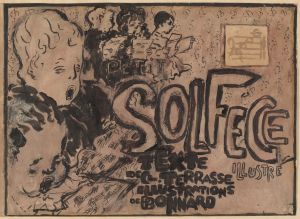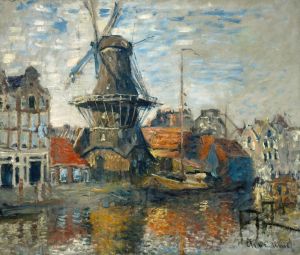
The Studio Boat
A hand-painted replica of Claude Monet’s masterpiece The Studio Boat, meticulously crafted by professional artists to capture the true essence of the original. Each piece is created with museum-quality canvas and rare mineral pigments, carefully painted by experienced artists with delicate brushstrokes and rich, layered colors to perfectly recreate the texture of the original artwork. Unlike machine-printed reproductions, this hand-painted version brings the painting to life, infused with the artist’s emotions and skill in every stroke. Whether for personal collection or home decoration, it instantly elevates the artistic atmosphere of any space.
"The Studio Boat" is a painting by the renowned French Impressionist artist Claude Monet. Created in 1874, this work is a notable example of Monet's innovative approach to capturing light and atmosphere, which became a hallmark of the Impressionist movement. The painting depicts a small boat that Monet converted into a floating studio, allowing him to paint directly on the water and capture the changing effects of light and reflection.
Monet's "The Studio Boat" is set on the River Seine, near the village of Argenteuil, where Monet lived from 1871 to 1878. This period was crucial for Monet as he developed his Impressionist style, characterized by loose brushwork, vibrant colors, and an emphasis on the effects of light. The painting reflects Monet's fascination with water and his desire to explore the interplay between natural elements and light.
In "The Studio Boat," Monet employs a palette of soft blues, greens, and whites to depict the serene environment of the river. The composition is balanced, with the boat positioned slightly off-center, creating a sense of movement and fluidity. The reflections in the water are rendered with delicate, broken brushstrokes, a technique Monet used to convey the shimmering quality of light on the water's surface.
The painting is a testament to Monet's dedication to painting en plein air, or outdoors, which was a revolutionary practice at the time. By working directly in nature, Monet was able to observe and capture the transient effects of light and atmosphere, which became central themes in his work. The studio boat itself was a practical solution that allowed Monet to immerse himself in his surroundings and respond to the changing conditions of the natural world.
"The Studio Boat" is also significant for its role in the broader context of the Impressionist movement. In 1874, the same year the painting was created, Monet and a group of like-minded artists organized the first Impressionist exhibition in Paris. This exhibition marked a departure from the traditional art establishment and introduced the public to a new way of seeing and representing the world. Monet's work, including "The Studio Boat," played a crucial role in defining the movement and influencing subsequent generations of artists.
Today, "The Studio Boat" is housed in the collection of the Barnes Foundation in Philadelphia, Pennsylvania. It remains an important example of Monet's innovative approach to painting and his enduring influence on the art world. The painting continues to be celebrated for its technical mastery and its ability to evoke the tranquil beauty of the natural world.
In summary, "The Studio Boat" by Claude Monet is a quintessential Impressionist painting that captures the artist's fascination with light, water, and the natural environment. Through his innovative techniques and dedication to painting outdoors, Monet created a work that not only reflects his personal artistic vision but also contributes to the broader legacy of the Impressionist movement.


















